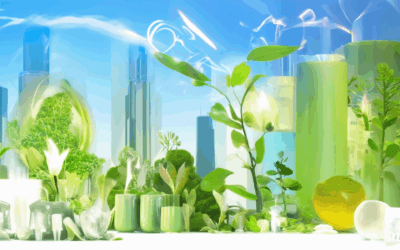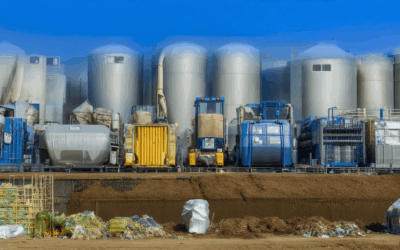Are you ready to transform your home garden into an eco-friendly sanctuary? Eco-friendly home gardening isn’t just about planting trees—it’s about adopting sustainable practices that benefit both your surroundings and your lifestyle. Whether you’re a seasoned gardener or new to the game, this guide will walk you through simple yet impactful ways to integrate eco-friendly habits into your daily routine. From reducing chemical use and conserving water to composting organic waste and exploring innovative indoor gardening options, we’ll explore how small changes can lead to big differences. Discover how your garden can become a haven for both people and nature, contributing to a healthier planet while enjoying fresh, organic produce. Let’s dive into the world of sustainable gardening and unlock the secrets to creating an eco-friendly space that thrives.
Key Takeaways
- Boosts Sustainability: Indoor gardening reduces water usage, energy consumption, and reliance on long-distance food transport.
- Efficient Resource Use: Utilizes hydroponic systems and drip irrigation to conserve water and nutrients.
- Energy-Efficient Practice: LED grow lights lower energy costs while promoting plant growth.
- Space-Saving Solution: Maximizes vertical space for urban dwellers to grow fresh produce year-round.
- Supports Biodiversity: Attracts pollinators and contributes to local wildlife habitat.
- Enhances Food Security: Provides fresh produce during off-seasons and reduces dependency on global supply chains.
- Promotes Organic Practices: Uses native plants and composting to minimize chemical use and waste.
- Fosters Community Resilience: Strengthens local economies and ensures food availability despite disruptions.
- Improves Air Quality: Plants act as natural air purifiers, enhancing indoor health.
- Conserves Water Resources: Efficient irrigation systems help preserve local water supplies.
- Reduces Carbon Footprint: Closely sourced gardening lowers transportation emissions.

How Can I Make My Garden More Environmentally Friendly?
To make your garden more environmentally friendly, consider implementing the following strategies:
- Composting : Start by collecting organic kitchen scraps like banana peels and eggshells. Use a worm composting bin to efficiently break down waste into nutrient-rich soil amendments. This reduces landfill waste and enhances soil fertility.
- Sustainable Lawn Care : Replace traditional grass with drought-tolerant grass varieties that require less water and fertilizer. Incorporate ground cover plants, such as clover or sweet potato, which thrive in minimal maintenance and stay green year-round.
- Water Conservation : Install drip irrigation systems to deliver water directly to plant roots, reducing water waste. Set timers to control watering frequency. Consider rain barrels to capture and store rainwater for plants.
- Wildlife Management : Plant native species that attract pollinators while deterring pests. Install bird feeders outside your garden area to divert bird activity. Research natural repellents like garlic spray or ultrasonic devices for effective pest control.
- Companion Planting : Grow crops like marigolds near tomatoes to deter pests. Utilize trap plants, such as lima beans, to attract aphids away from your garden.
- Mulching : Apply wood chips or leaves as mulch to retain moisture, suppress weeds, and improve soil health. Use a chipper to process branches and leaves into manageable sizes.
- Natural Pest Control : Replace synthetic pesticides with natural alternatives like neem oil or insecticidal soap. These options are safer for the environment and effectively manage common garden pests.
- Reduce Plastic Waste : Initiate a community effort to reduce plastic use by promoting reusable bags and proper waste disposal. Educate neighbors on eco-friendly habits to enhance sustainability.
- Join Community Groups : Engage with local gardening forums or clubs to gain insights and share experiences. Collaborative learning can lead to more successful gardening practices and environmental initiatives.
By adopting these practices, you can create a more sustainable and eco-friendly garden while contributing positively to the environment.
The Most Sustainable Plants to Grow
When considering sustainability in gardening, several plants stand out for their ability to thrive without excessive resources and contribute positively to the environment. Here are some of the most sustainable plants:
- Bamboo : Known for its rapid growth, bamboo requires minimal chemical inputs and uses rainwater effectively. Its extensive root system helps combat erosion and sequesters carbon.
- Mushrooms : Mushrooms are highly sustainable as they decompose quickly, enriching the soil and requiring little maintenance. They are ideal for small spaces and organic farming.
- Clover : Clover is a nitrogen-fixing plant that improves soil fertility and is drought-tolerant, making it perfect for arid conditions and reducing the need for synthetic fertilizers.
- Chickpeas : These legumes fix nitrogen in the soil, enhance biodiversity, and have deep roots that access water reserves, making them resilient to droughts.
- Barley : Barley is a water-efficient crop with deep roots that prevent soil erosion. It thrives in diverse climates and requires minimal pesticides.
- Fava Beans : Fava beans are nitrogen-fixers that grow well in poor soils and are highly nutritious. They are drought-resistant and can be used for both food and cover cropping.
These plants not only provide ecological benefits but also offer practical advantages for sustainable living. By incorporating them into your garden or agricultural project, you can support biodiversity, reduce environmental impact, and enjoy the rewards of a self-sustaining ecosystem.

Is Home Gardening Good for the Environment?
Yes, home gardening has numerous environmental benefits that make it a sustainable and eco-friendly practice. By growing your own fruits, vegetables, and flowers, you contribute positively to the environment in several ways:
Biodiversity Conservation
Home gardens play a crucial role in supporting local biodiversity. They provide habitats and food sources for pollinators like bees and butterflies, which are essential for ecosystem health. Native plants in home gardens attract these beneficial insects, helping to maintain biodiversity and prevent decline.
Mitigating Climate Change
Gardening at home can help combat climate change by reducing carbon emissions. By choosing plants that absorb CO2 and release oxygen, you contribute to carbon sequestration. Additionally, organic gardening practices reduce reliance on synthetic fertilizers and pesticides, which can harm the environment.
Improving Soil Health
Healthy soil is the foundation of a thriving garden. Home gardening practices like composting and mulching enhance soil fertility, preventing erosion and improving water retention. This leads to better plant growth and reduced runoff of nutrients into water systems.
Reducing Pollution
Gardens act as natural filters, absorbing air pollutants and purifying water. By growing your own produce, you reduce the need for plastic packaging and long-distance transportation, which contribute to pollution. Composting kitchen scraps also decreases landfill waste and methane emissions.
Supporting Local Food Security
Growing your own food ensures fresh, nutritious produce while reducing dependence on industrial agriculture. This practice strengthens community resilience and promotes self-sufficiency during uncertain times.
Enhancing Mental Well-being
Spending time in the garden connects people to nature, reducing stress and anxiety. The therapeutic benefits of gardening improve emotional health while fostering a deeper appreciation for the environment.
By adopting sustainable gardening practices, you can maximize the positive impact on the planet while enjoying fresh, healthy produce. Start small, choose plants suited to your area, and gradually explore new techniques to create a thriving green space.

Is Indoor Gardening Sustainable?
Yes, indoor gardening is a highly sustainable practice that offers numerous environmental benefits. Here’s why it stands out as a responsible choice:
Reduced Water Usage
Indoor gardens often require far less water than traditional farming methods, particularly when using hydroponic systems or drip irrigation. This conserves precious resources and minimizes the strain on local water supplies.
Energy Efficiency
Lighting plays a significant role in indoor gardening. LED grow lights are highly energy-efficient, consuming far less power than traditional incandescent bulbs. This reduces your carbon footprint while maximizing plant growth.
Local Food Production
Growing your own food indoors reduces the need for long-distance transportation, cutting down on greenhouse gas emissions associated with food distribution. It also enhances local food security by providing fresh produce year-round.
Space-Saving Solution
Indoor gardens are ideal for small spaces, making them perfect for urban dwellers. They maximize vertical space and allow you to grow fresh herbs, vegetables, and flowers regardless of your property size.
Sustainable Practices
Choosing native plants and those suited to your region ensures minimal water usage and maximum biodiversity. These plants are already adapted to your local climate, requiring less maintenance and supporting local wildlife.
Nutrient Recycling
Systems like hydroponics recycle water and nutrients efficiently, minimizing waste and environmental impact. Composting or using organic fertilizers further reduces reliance on synthetic chemicals.
Broad Community Benefits
Indoor gardening fosters self-sufficiency and reduces the community’s reliance on global supply chains, which can be disrupted by events like climate change or pandemics. It strengthens food resilience and encourages sustainable living practices.
By adopting these sustainable techniques, you can enjoy fresh produce while contributing positively to the planet. Explore guides on starting a sustainable indoor garden or learning more about hydroponic systems to enhance your efforts.
What is the best indoor garden system?
Top Picks for the Best Indoor Garden Systems
-
Smart Garden by Click & Grow
The Smart Garden by Click & Grow is a top-tier option for indoor gardening enthusiasts. It uses hydroponic technology to grow plants efficiently, with built-in sensors that monitor light, water, and nutrients. Its automated system ensures optimal conditions for plant growth, making it ideal for those with limited time or expertise. Check out the Smart Garden by Click & Grow
-
AeroGarden
AeroGarden offers a customizable indoor gardening solution that includes automatic nutrient feeding and LED lighting. Known for its ease of use and robust features, it’s perfect for both beginners and experienced gardeners looking to maximize plant health and yield. Explore AeroGarden
-
GreenWave Hydroponics
For those seeking a more advanced setup, GreenWave Hydroponics provides cutting-edge hydroponic systems tailored for serious growers. Their systems support various plant types and offer precise control over growing environments. Discover GreenWave Hydroponics
-
Self-Watering Container Gardens
The Sill’s self-watering containers are a simple yet effective option. These containers maintain moisture levels automatically, allowing you to grow plants with minimal effort. Perfect for small spaces or busy lifestyles. Learn more about The Sill
Factors to Consider When Choosing an Indoor Garden System
- Ease of Use: Look for systems with automation features to simplify your gardening experience.
- Space and Lighting Requirements: Ensure the system fits your environment and provides adequate light for plant growth.
- Watering and Nutrient Management: Choose a system that matches your watering preferences and offers nutrient customization.
- Customization and Control: Advanced systems allow for adjustments to suit different plants and growing stages.
- Budget: Consider your budget and select a system that offers the best value for your needs.
- Plant Variety and Growth Needs: Ensure the system supports the plants you want to grow, considering their specific requirements.

Why Indoor Gardening is Great for the Environment
We’ve compiled six compelling reasons why indoor gardening is not only beneficial for you but also for the planet:
-
Reduces Carbon Footprint
Indoor gardens require less energy to maintain compared to traditional farming. By growing plants closer to home, we minimize transportation emissions and reduce our reliance on fossil fuels.
-
Improves Air Quality
Houseplants act as natural air purifiers, absorbing harmful pollutants like carbon monoxide and benzene. This makes indoor spaces healthier, especially in urban areas with higher levels of air contamination.
-
Conserves Water Resources
Indoor gardens use significantly less water compared to outdoor lawns or farms. This helps preserve precious water supplies and reduces strain on local water systems.
-
Supports Biodiversity
Urban green spaces, including indoor gardens, provide habitats for pollinators like bees and butterflies. These creatures are essential for ecosystem health and food production.
-
Contributes to Food Security
With rising population and changing climates, indoor gardening helps ensure year-round access to fresh produce. This reduces dependence on imported foods and supports local economies.
-
Reduces Waste
Gardening organically minimizes chemical runoff and reduces landfill waste. Composting kitchen scraps and yard waste creates nutrient-rich soil, further enhancing sustainability.
By embracing indoor gardening, we can all contribute to a healthier planet while enjoying the beauty and bounty of our own spaces.




0 Comments